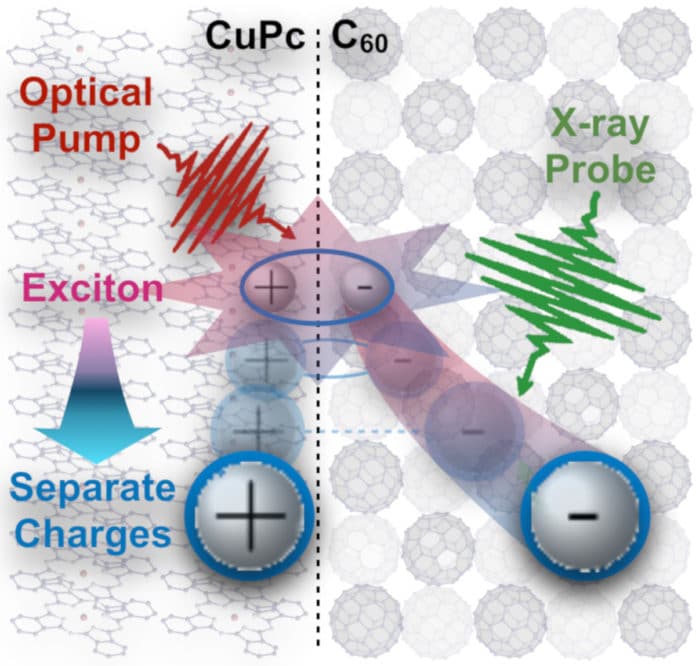In recent years, scientists have made significant advances in photovoltaic technologies. But the current state-of-the-art sources are still deficient in competing with electricity or transportation fuel derived from petroleum.
Improving efficiency, however, requires detailed knowledge of all the steps from the initial to the final stage.
Scientists from the Berkeley Lab, DESY, the European XFEL, and the Technical University Freiberg, Germany, have introduced a hidden charge-generating pathway that could improve the efficiency of current photovoltaic technologies to convert sunlight into electricity or solar fuels like hydrogen.
They used DESY’s free-electron laser FLASH to shine ultrashort infrared and X-ray laser flashes on a copper-phthalocyanine: fullerene (CuPc: C60) material to study the charge generation mechanisms with a time resolution of 290 femtoseconds (290 quadrillionths of a second).
They then combined ultrashort pulses of light with a technique called time-resolved X-ray photoemission spectroscopy (TRXPS) to determine and calculate the number of photons absorbed by CuPc: C60 formed applicable separate charges, and the number of absorbed photons only led to heating the material.
Oliver Gessner, a senior scientist in Berkeley Lab’s Chemical Sciences Division, said, “This unique approach unveiled an unknown pathway in CuPc: C60 that turns up to 22% of absorbed infrared photons into separate charges.”
“Our study will help people develop better models and theories so we can get there.”
Journal Reference:
- Roth, F., Borgwardt, M., Wenthaus, L. et al. Direct observation of charge separation in an organic light-harvesting system by femtosecond time-resolved XPS. Nat Commun 12, 1196 (2021). DOI:10.1038/s41467-021-21454-3
